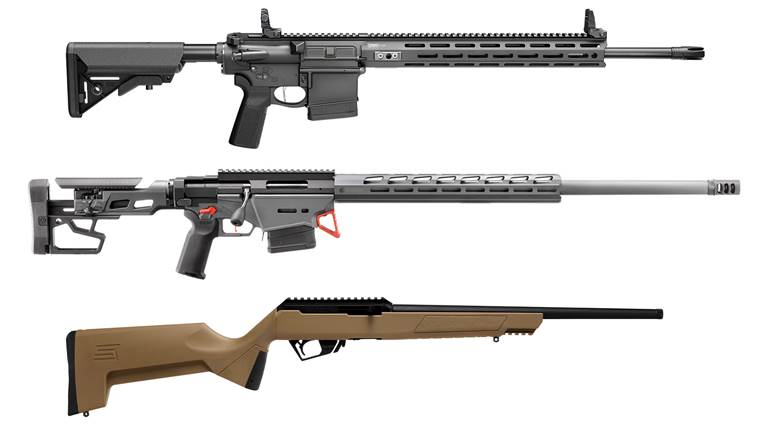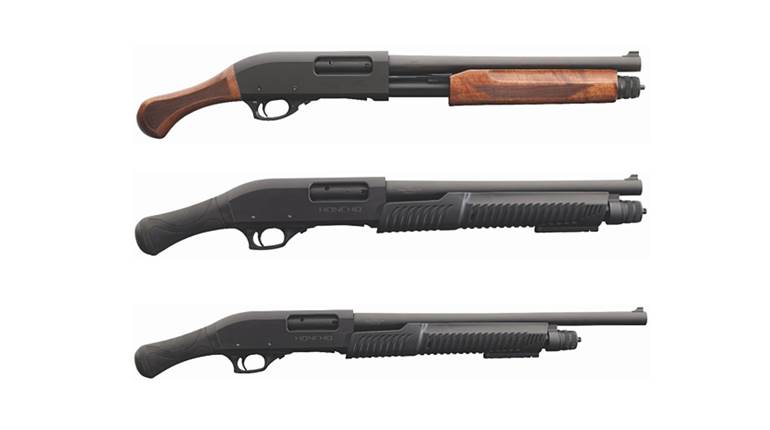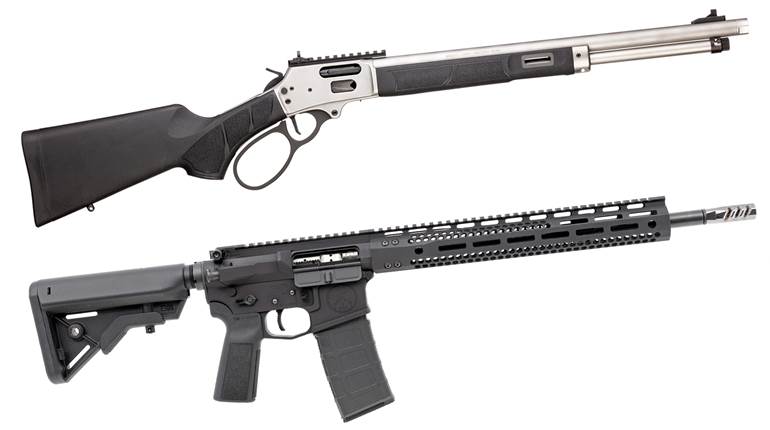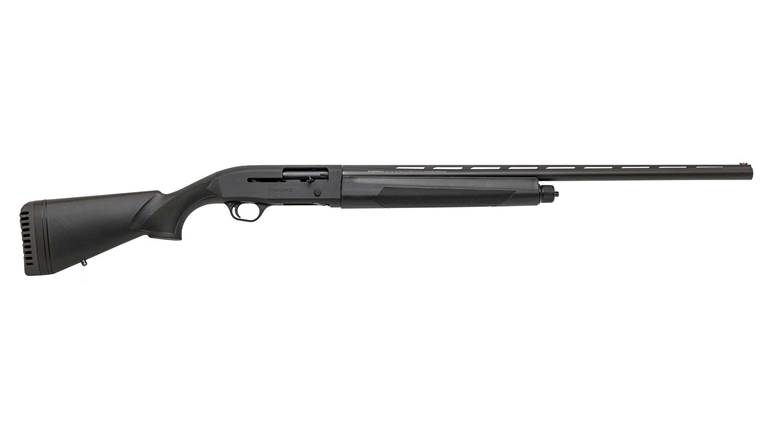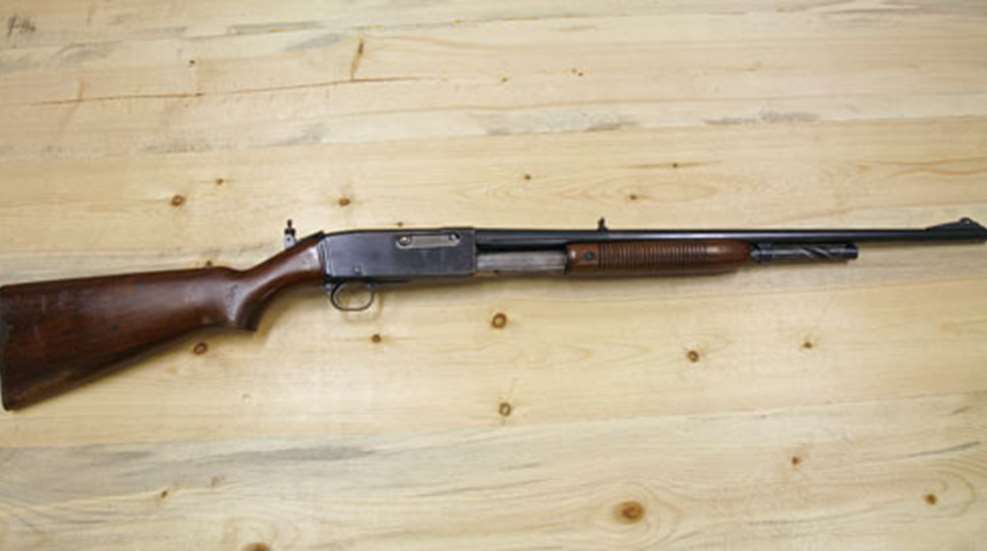
At the turn of the 20th century, lever-action rifles ruled the American gun world. Winchester, Marlin and Savage all had rifles with a loop-like under-lever chambered for everything from pistol calibers like the .32-20 to the massive .45-90 and beyond. The introduction of smokeless powders in 1893 brought with it new chamberings that touted high velocity as well as rapid firepower. American shooters and hunters—with their insatiable appetite for whatever is bigger and faster—clamored after the lever-guns.
Remington wanted in on the action but could not see a vulnerable niche in the lever-action market. The company felt the lever market was saturated and what was needed was another high-velocity, fast-firing design. A first attempt to get a jump on the lever-action rifle came in 1908 when Remington brought out the Model 8 autoloading rifle designed by John Browning. But the Model 8 was heavy, clunky and homely. What was needed was a light, fast-repeating rifle with sleek lines. John Pederson, who would later design the Pederson Device for the Model 1903 Springfield rifle, was given the task of designing a rifle to compete with the lever-action.
In 1913, Remington introduced the Model 14 pump- or slide-action rifle in four chamberings, .25, .30, .32 and .35 Remington. The cartridges were based upon the same case, differing only in neck size and some minor shoulder dimensions. A companion model called the 14 1/2 was chambered in a couple of the more popular pistol cartridges of the day—the .38-40 and .44-40 WCF.
Over the next 23 years, the Models 14 and 14 1/2 enjoyed some fairly good sales—in all 125,020 units made it into the hands of hunters. The rifle was sleek and light; it had to be in order to compete with the lever-guns. Two design features that were particularly novel were the spiral magazine tube that prevented the point of one bullet from resting on the primer of the next cartridge, and how the magazine itself moved with the fore-end. The sliding bolt had a button on its side to release the bolt. In .30 Remington, the rifle was on par with the popular .30-30 Win., but eastern woods hunters who hunted black bears were quite fond of the .35 Remington with its 200-grain, round-nose bullet travelling at 2,100 fps.
Production of the Models 14 and 14 1/2 was curtailed during the Great War but returned in 1919. Sales continue steadily throughout the 1920s until the stock market crashed in 1929, ushering in The Great Depression. The DuPont Company had been supplying Remington with gunpowder for many years for use in its ammunition, but as The Depression continued to take its toll on Remington, DuPont saw an opportunity to gain controlling interest in the company and did so on May 23, 1933. In addition to a much-needed capital investment, DuPont had Remington re-evaluate its entire product line, seeking to cut costs and make the production of each product as efficient as possible.
G.H. Garrison reviewed the Model 14 rifle in 1935 and offered some cosmetic and functional improvements. Barrels were lengthened from 22 to 24 inches on rifles, and 18 to 18 1/2 inches on carbines. The fore-end was given a slight beavertail treatment, and the stock was redesigned for faster handling and a steel shotgun-style buttplate was added. The upgraded rifle was christened the Model 141 Gamemaster, and a rendition of a brass cartridge head for which the rifle was chambered was imbedded in the receiver on the left side. As part of the paring process, the .25 Remington cartridge was dropped from the line after 1936, and this chambering is considered very rare in the 141.
In 1936, a Standard Grade Model 141A sold for $46. A Model 141C Special Grade went for $79.75; the Model 141D Peerless Grade cost $146.85; and the 141F Premier Grade was $300. It was produced until 1950—save for the World War II years—and some 76,881 rifles were sold. Two years after the last Model 141 left the factory it was replaced by the Model 760 Gamemaster rifle.
While they didn’t set the world afire, the slide-action Remingtons were a staple for country people who were more concerned with filling their larders than having a bunch of fancy frills on their rifles. I bought a 141 in .35 Remington from an estate sale several years ago and used it on a few wild hogs and one deer. My impression is that it’s a fine working rifle—dependable, handy and accurate for its cartridge. Collector interest is rather ho-hum, with a 100-percent specimen fetching perhaps $500 today, though carbine versions manufactured up until 1942 command an almost 100-percent premium over rifle versions.
What I like about this rifle is its pre-War workmanship at a blue-collar price. It is all steel and walnut, machined and hand-finished. The Remington Model 141 may not be the belle of the ball with Circassian walnut, rosewood embellishments and cartridges that lay herbivores low at a country mile, but to my eye it is elegant because of its simple, clean lines, and its reliable performance.













